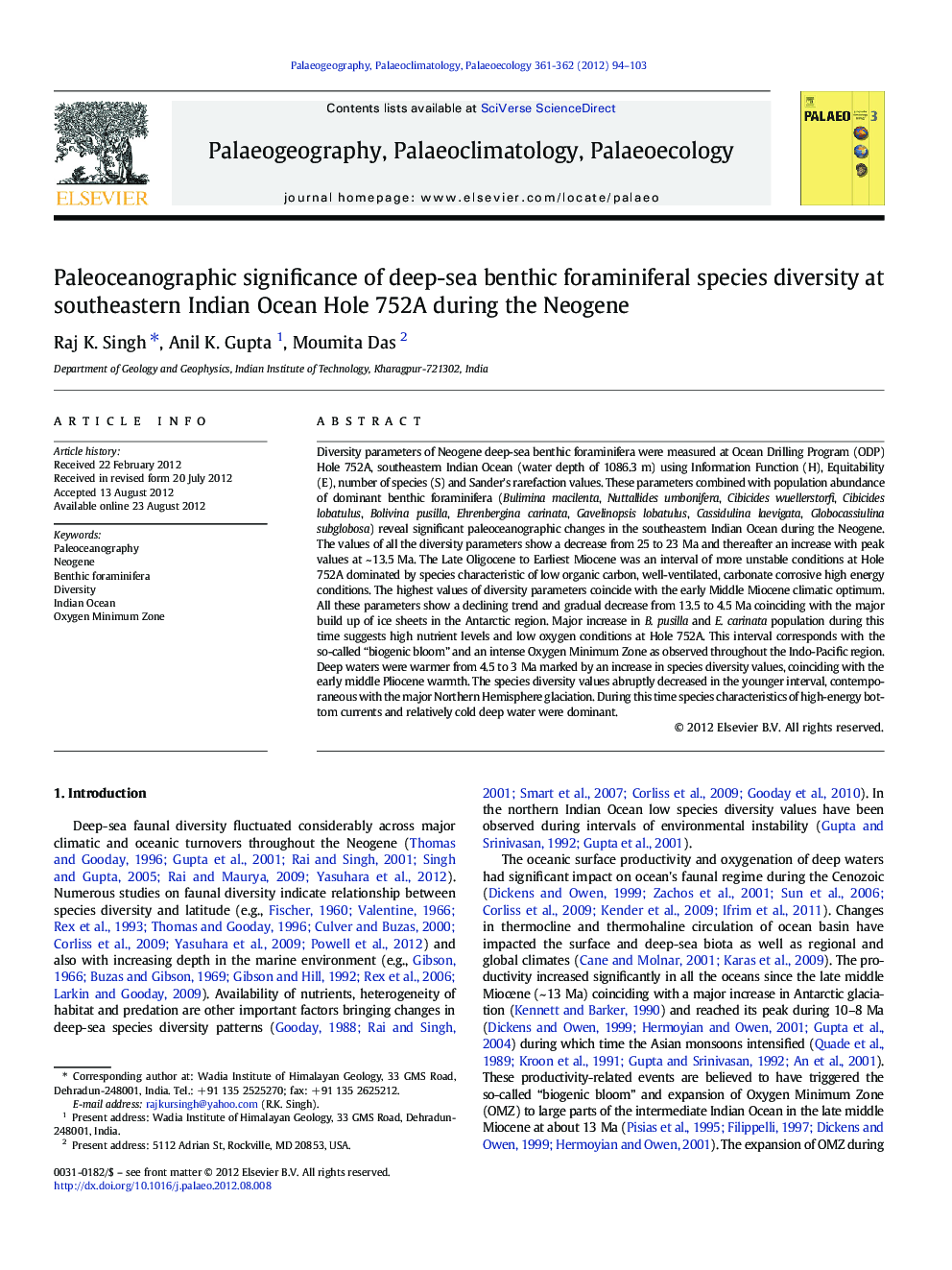| کد مقاله | کد نشریه | سال انتشار | مقاله انگلیسی | نسخه تمام متن |
|---|---|---|---|---|
| 4466783 | 1622221 | 2012 | 10 صفحه PDF | دانلود رایگان |

Diversity parameters of Neogene deep-sea benthic foraminifera were measured at Ocean Drilling Program (ODP) Hole 752A, southeastern Indian Ocean (water depth of 1086.3 m) using Information Function (H), Equitability (E), number of species (S) and Sander's rarefaction values. These parameters combined with population abundance of dominant benthic foraminifera (Bulimina macilenta, Nuttallides umbonifera, Cibicides wuellerstorfi, Cibicides lobatulus, Bolivina pusilla, Ehrenbergina carinata, Gavelinopsis lobatulus, Cassidulina laevigata, Globocassiulina subglobosa) reveal significant paleoceanographic changes in the southeastern Indian Ocean during the Neogene. The values of all the diversity parameters show a decrease from 25 to 23 Ma and thereafter an increase with peak values at ~ 13.5 Ma. The Late Oligocene to Earliest Miocene was an interval of more unstable conditions at Hole 752A dominated by species characteristic of low organic carbon, well-ventilated, carbonate corrosive high energy conditions. The highest values of diversity parameters coincide with the early Middle Miocene climatic optimum. All these parameters show a declining trend and gradual decrease from 13.5 to 4.5 Ma coinciding with the major build up of ice sheets in the Antarctic region. Major increase in B. pusilla and E. carinata population during this time suggests high nutrient levels and low oxygen conditions at Hole 752A. This interval corresponds with the so-called “biogenic bloom” and an intense Oxygen Minimum Zone as observed throughout the Indo-Pacific region. Deep waters were warmer from 4.5 to 3 Ma marked by an increase in species diversity values, coinciding with the early middle Pliocene warmth. The species diversity values abruptly decreased in the younger interval, contemporaneous with the major Northern Hemisphere glaciation. During this time species characteristics of high-energy bottom currents and relatively cold deep water were dominant.
► The studied hole 752A located in the southeastern Indian Ocean
► Paleoceanographic significance of benthic foraminifer species diversity
► During Late Oligocene to Earliest Miocene deep sea conditions were more unstable.
► OMZ and ‘biogenic bloom’ observed from 13.5 to 4.5 Ma
► Deep waters were warmer from 4.5 to 3 Ma.
Journal: Palaeogeography, Palaeoclimatology, Palaeoecology - Volumes 361–362, 15 November 2012, Pages 94–103